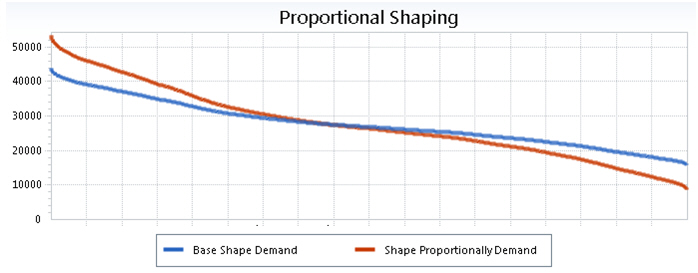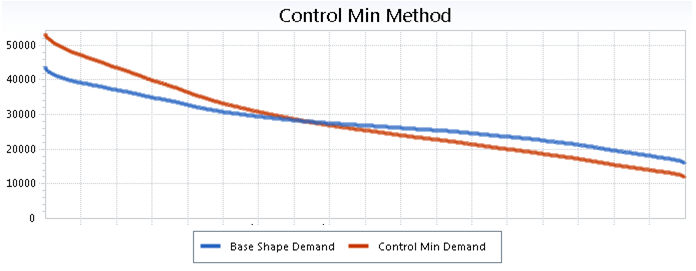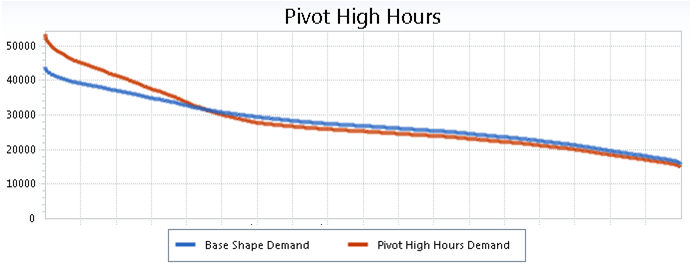Shaping Method Column
Column Type = Text
This optional column is used to select what type of algorithm will be used to shape demand. All methods use an underlying input shape, a peak value, and an average value to determine a final demand curve that hits the peak, has the right average, and stays true to the underlying shape. Each method honors peak and energy inputs but result in slightly different shapes (i.e., load factor is constant).
Shape Proportionally is the default method used to meet the peak. This simple method uses an algorithm that ensures every hour from the original shape moves in the same way, i.e. the minimum is moved down in the same way peak pulled up. Occasionally, when the peak gets too high this method pushes the minimum down, potentially to zero. The next two methods can be used so that the bottom part of the curve does not move down in the same way that the top part of the curve moves up.

Control Min takes as input a peak, average, and minimum value, and this algorithm uses a quadratic program to minimize the deviation from the underlying shape given the constraints of hitting the min, average, and maximum.

Pivot High Hours takes as input a percent value (the default being 66.67%) to determine at what point to pivot the curve. This algorithm uses an iterative approach to converge upon the peak and the average. In essence, it takes all hours above the pivot point and shapes them in the same way to meet the maximum value, re-normalizes the curve to get the average, shapes the top hours again to get the maximum, etc.

![]() Shaping Method Column
Shaping Method Column